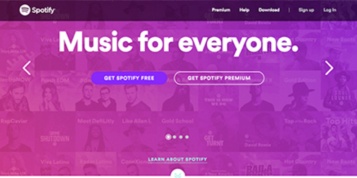Apple’s admission that it needs to address its monetisation system for publishers who distribute their content in the company’s News app is another crushing blow to the walled gardens of the digital media ecosystem. Tired of giving away proprietary content for free to Apple News, Facebook, and Google – closed platforms that offer immense audience reach but restrict access to lucrative advertising inventory and data – publishers are threatening to pull out unless their share of revenue increases.
Apple’s suggested solution would allow top media partners to use their own technology to fill the ad space on their content, effectively turning the News app into an extension of the publishers’ own website. This would mean publishers would make as much money from views in Apple News as they do on their own sites.
The demand for a more transparent and open digital advertising ecosystem will only continue to intensify. In 2016, Facebook and Google alone collected nearly half of the global digital advertising spend and now account for the lion’s share of spending growth in the online market. This helps explain why we’ve seen the Association for National Advertisers (ANA) call for the breakdown of walled gardens, with 90% of their members supporting independent audits of these platforms.
The realisation by publishers and advertisers alike of the existential threat posed by the Facebook-Google duopoly came to the fore amidst the rise of ‘fake news,’ as it became apparent that their closed supply chains are not offering advertisers a 100 percent brand-safe environment. Indeed, the Institute of Practitioners in Advertising (IPA) recently criticised Google and Facebook for not moving fast enough to tackle problems with brand safety, viewability, and measurement, further amplifying appeals for greater control and accountability for ad placement.
Opaque and inefficient supply chains are two of the biggest challenges the open internet must address to stop a disproportionate share of advertising spend flowing to a handful of closed platforms. As the ecosystem continues to consolidate and products become commoditized, it’s clear that the industry needs to tackle issues of price transparency and platform openness.
First, it’s time to start thinking about viewability as the default currency, where advertisers only pay for viewable impressions. Advertisers lost a reported £606m to non-viewable adverts last year. If viewability were to become the standard—as we expect it will—advertisers’ budgets will go further in getting their messages in front of real consumers’ eyes.
Second, moving our industry towards delivering 100 percent viewable, fraud-free, effective digital advertising requires us to clean up the programmatic supply chain. We need to build an efficient marketplace that enables quality publishers to pocket the majority of advertising spend. That means cutting out low-value intermediary actors and directing spend along the most efficient path between buyers and sellers. Such an open ecosystem promises and prioritises giving advertisers and publishers a fair auction, resulting in a fair price. New technology like blockchain is also helping usher in greater transparency into the marketplace.
For publishers, header bidding has transformed their monetisation efforts. No longer beholden to Google’s DFP / AdX black box, they’ve been able to dramatically increase revenue. Header bidding was created to address a major pain point in programmatic advertising: publisher ad servers have historically been unable to efficiently evaluate bids from multiple demand partners at once. Moving away from the traditional waterfall setup, header bidding allows publishers to source bids from all of their demand sources at the same time by making ad calls to all of them simultaneously. This eliminates the inefficient hierarchy of the waterfall, ensuring every demand partner gets a chance to bid on every impression, and increases yield for publishers by allowing greater competition.
More recently, moving header bidding server-side has been shown to decrease latency, a user experience problem that may occur when a publisher has too many demand partners in their header bidding solution. Already, by using this disruptive technology, publishers are retaking control of their businesses and using independent partners to help them acquire, engage, and monetise their audiences across the open internet.
For advertisers, the creation of an ad tech consortium provides a standardised framework to utilise programmatic technologies outside of the Facebook-Google duopoly. By integrating identity resolution into programmatic advertising, this consortium will help marketers deliver the right content at the right time, enhancing the online user experience. This collaboration of digital advertising business is crucial for building a better, more efficient marketplace.
This new marketplace will require unity across the industry and a shared commitment to changing the programmatic landscape for the better. The walled gardens in digital advertising are stumbling amidst technological innovations and collaboration amongst key ad tech players. Ultimately, the aim is a better internet that provides advertisers with open transparent alternatives, and publishers, the ability to regain control of their audiences and yields.





